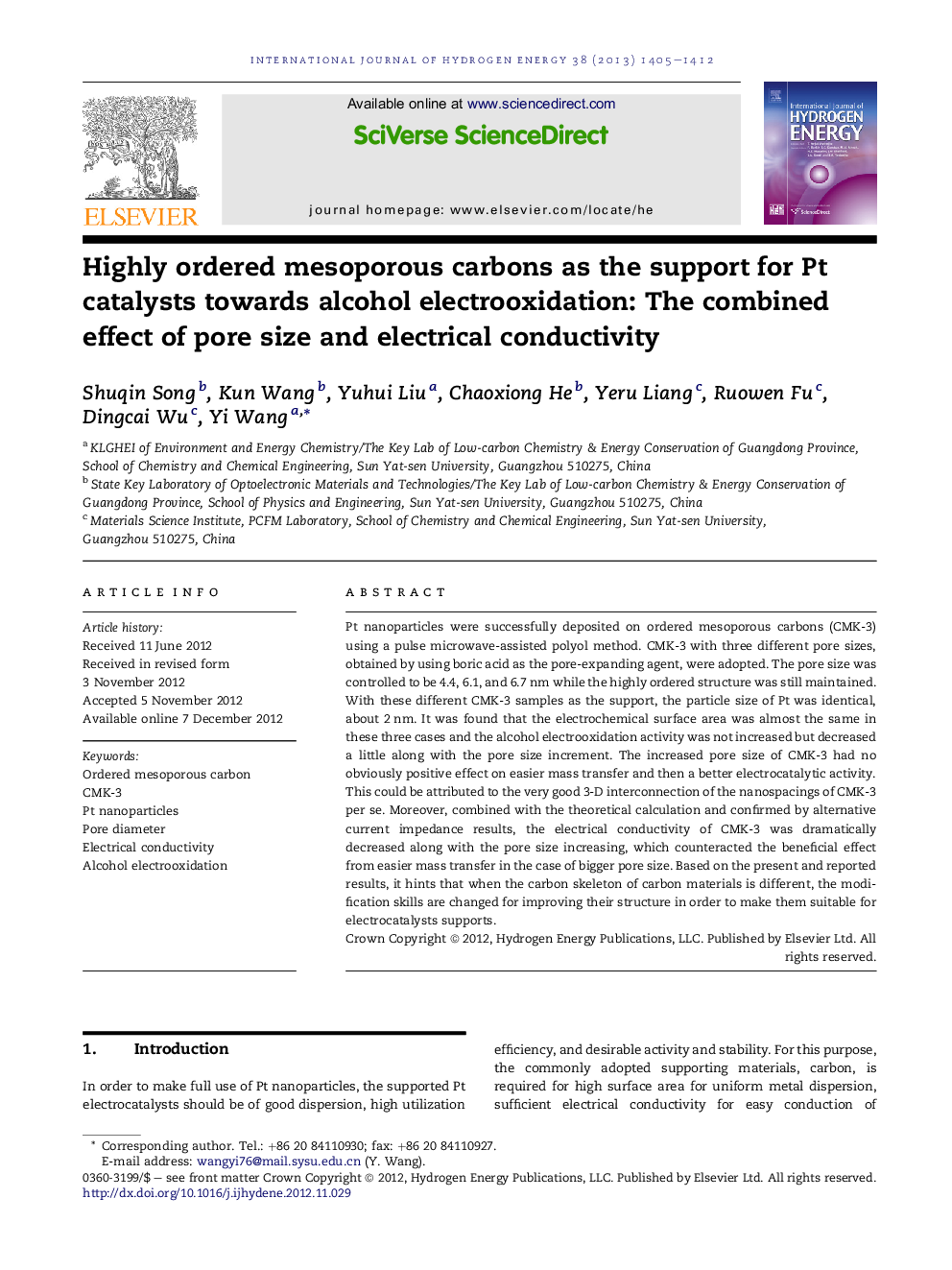| Article ID | Journal | Published Year | Pages | File Type |
|---|---|---|---|---|
| 1275925 | International Journal of Hydrogen Energy | 2013 | 8 Pages |
Pt nanoparticles were successfully deposited on ordered mesoporous carbons (CMK-3) using a pulse microwave-assisted polyol method. CMK-3 with three different pore sizes, obtained by using boric acid as the pore-expanding agent, were adopted. The pore size was controlled to be 4.4, 6.1, and 6.7 nm while the highly ordered structure was still maintained. With these different CMK-3 samples as the support, the particle size of Pt was identical, about 2 nm. It was found that the electrochemical surface area was almost the same in these three cases and the alcohol electrooxidation activity was not increased but decreased a little along with the pore size increment. The increased pore size of CMK-3 had no obviously positive effect on easier mass transfer and then a better electrocatalytic activity. This could be attributed to the very good 3-D interconnection of the nanospacings of CMK-3 per se. Moreover, combined with the theoretical calculation and confirmed by alternative current impedance results, the electrical conductivity of CMK-3 was dramatically decreased along with the pore size increasing, which counteracted the beneficial effect from easier mass transfer in the case of bigger pore size. Based on the present and reported results, it hints that when the carbon skeleton of carbon materials is different, the modification skills are changed for improving their structure in order to make them suitable for electrocatalysts supports.
► CMK-3 with different pore size was controllably synthesized. ► Pt/CMK-3 with bigger pore size exhibited inferior electrochemical activity. ► The electrical conductivity of CMK-3 with bigger pore size was decreased. ► The study hints that carbon skeleton significantly affects the modification skills.
